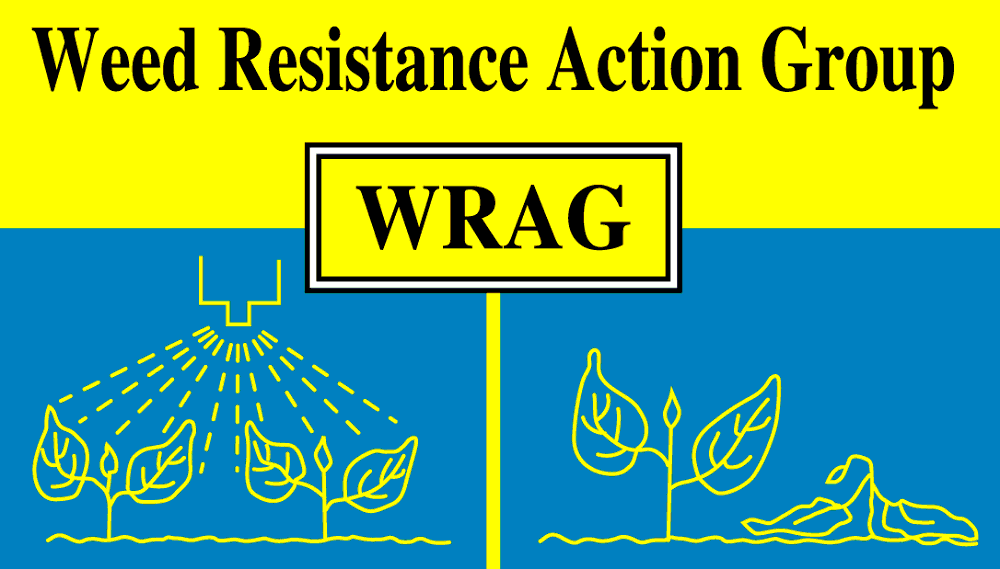Put stewardship at the heart of glyphosate use, says WRAG
Wednesday, 9 November 2022
Weeds continue to pose a threat to productivity on arable farms, with glyphosate a vital active ingredient. Written by the Weed Resistance Action Group (WRAG), this article examines how to manage herbicide resistance risks.
Glyphosate use
In recent years, farmers have responded well to black-grass challenges. Cultural controls and rotational changes, alongside herbicide use, have managed to bring black-grass under control in many situations.
Glyphosate played a crucial role in this story, eliminating weeds in stale seedbeds during autumn and in dense weed patches in spring to reduce seed return.
But the first act of the black-grass story is about the decline in efficacy of post-em actives, partly due to poor stewardship. The loss of an important active normally leads to the rapid appearance of serious weed problems.
Fortunately, the way glyphosate is used and the inherent properties of the active make it less liable to suffer resistance problems compared to in-crop chemistry. However, experience around the world shows that glyphosate is not invincible. Weeds can develop resistance if proper stewardship steps are not taken. Such steps are within the control of all glyphosate users.
However, current commodity market turbulence is pushing farmers to make decisions based on more immediate financial considerations, not agronomics. It is easy to foresee scenarios where this could increase weed problems and put more pressure on herbicides.
In these circumstances, it is vital to reiterate the importance of good stewardship for all actives, particularly glyphosate, because it is so widely used across the rotation and no alternative can match it for weed control.
Glyphosate stewardship
Along with the activities of manufacturers, AHDB research and knowledge exchange has helped understand the risks and actions that need to be taken to protect glyphosate’s efficacy.
WRAG revised its glyphosate stewardship guidelines in 2021, which are a central part of the industries’ technical information for glyphosate products.
Guidelines for minimising the risk of glyphosate resistance in the UK (full)
Glyphosate resistance guidelines (short)
However, the compilation of the guidance highlighted knowledge gaps and uncertainties.
AHDB and industry partners (Bayer, FMC, Alburgh Europe, Nufarm, Agrii, Agrovista, Frontier and Hutchinsons) funded work to fill gaps and provide greater confidence in the key messages.
Project manager Lynn Tatnell of ADAS said: “The research highlighted the robustness of the initial guidelines. Accurate timing, correct dose, and effective application, partnered with cultivation in stale seedbeds, are very important.”
 AHDB.JPG) AHDB
AHDB
Ensuring diversity in control methods is fundamental to all stewardship. If the same approach is repeated over and over – whether it is a cultural or chemical technique – weeds inevitably adapt.
On many farms, glyphosate is used every season. To protect it, farmers can cultivate stubbles after application to control survivors and use other modes of action in the crop.
For any herbicide, the most important approach is to avoid repeat applications to survivors and their offspring. In such situations, repeat applications can lead to resistance building up rapidly. It is vital to monitor survivors and understand the reasons for any poor control observed. Often it is not due to resistance, but the application technique or conditions.
Poor technique and timing must not be ignored. For example, giving a sub-optimal dose or applying when weeds are more able to survive glyphosate, such as during stem extension or after winter hardening, contribute to resistance risk.
Application specialist Tom Robinson said: “It is also very important that the rate added to the spray tank reaches the target. Poor technique means it can be lost to drift or result in variable application across the field, all potentially reducing control.”
Bayer’s Roger Bradbury (pictured) said: “The biggest challenge facing glyphosate stewardship is probably the familiarity of the active. It’s easy to overlook the attention to detail on rates and application that you might give to a new active. But glyphosate’s unique place in the rotation and lack of a viable replacement mean that stewardship is vital to ensure long-term efficacy.”
Industry monitors weeds for changes in sensitivity to provide an early warning for resistance.
This year, Bayer-funded glyphosate resistance testing, conducted by NIAB, of 50 ‘difficult’ Italian rye-grass samples provided good news – no resistance was detected in glasshouse tests.
However, as sensitivity shifts were recorded in a small number of field populations, it underlines the importance of a proactive approach to resistance management.
.jpg) WRAG
WRAG
About WRAG
The AHDB-supported resistance action groups are informal, UK-based groups consisting of experts from the Crop Protection Association (CPA) member companies, other representatives from the agrochemical industry, a range of independent organisations, including public-sector research institutes, and the Chemicals Regulation Directorate (CRD).
The Weed Resistance Action Group (WRAG) produces guidance. Hosted by AHDB, this information can be used to help protect crops and the long-term efficacy of herbicides.
 WRAG
WRAG
Topics:
Sectors:
Tags:

